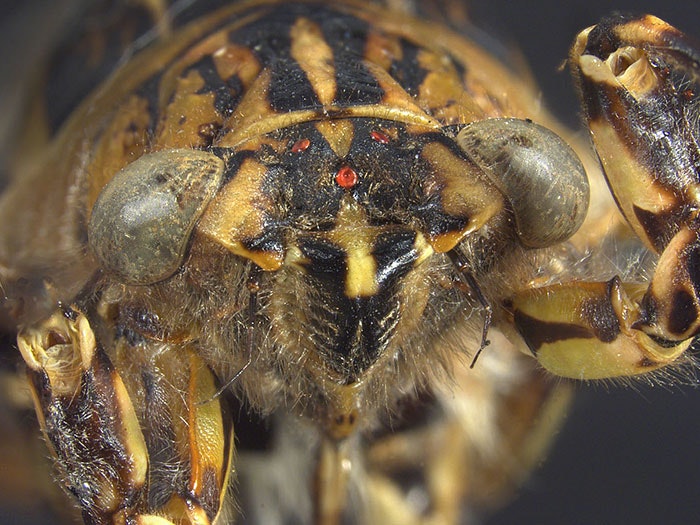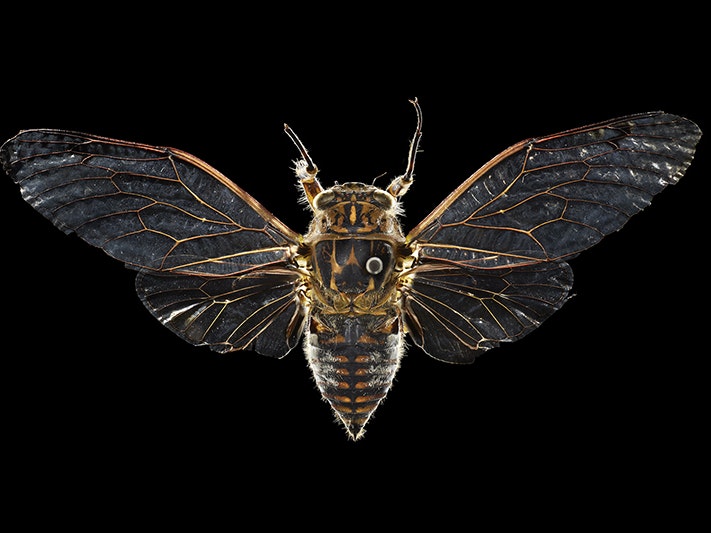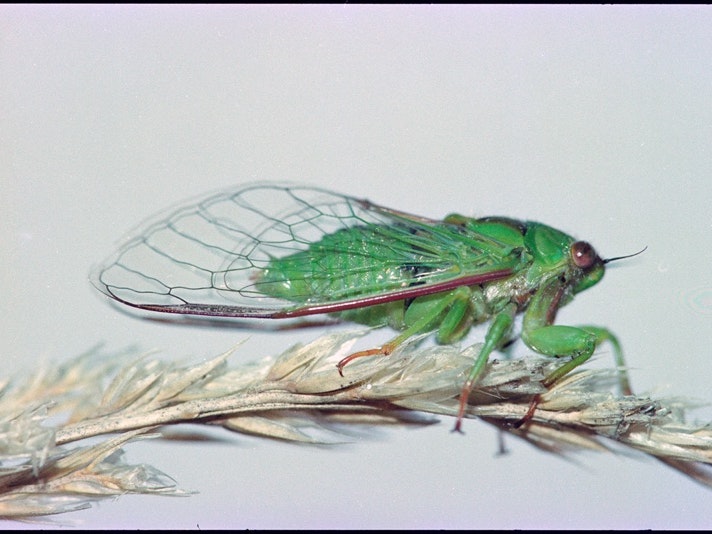
Why are cicadas so loud?
What is that noise cicadas make, and why is it so loud?
Free museum entry for New Zealanders and people living in New Zealand
Open every day 10am-6pm
(except Christmas Day)
Free museum entry for New Zealanders and people living in New Zealand
How does an insect attract a mate? How do they hear? Why do they vibrate their wings and drum on the ground? Insects use many different ways to communicate. Like us humans, many insects use sound waves to communicate, but some insects use other techniques too.
Like for us humans, it is also important for insects to communicate – either with members of their own species, e.g., to find a mate or share a food source, but also with other species, e.g., to scare them off.
They can do this in so many ways, such as warning patterns of the wings (think of the big patches on butterfly or moth wings that look like eyes of a much larger animal), a particular movement pattern e.g. ‘waggle dance’ of bees) or even with chemical cues, such as pheromones (e.g. ants or moths), but also sound is known to have an important function in the species communication system.
An adult Emperor Gum Moth, Wellington New Zealand. Photo by Chris Noble. Via Wikimedia Commons CC BY-SA 3.0
Fire ants (Solenopsis invicta). Photo via Wikimedia Commons. Public domain
Some insects, such as cicadas and grasshoppers, make sounds that travel as sound waves through the air. These sounds can sometimes be audible to the human ear. The study of these insect sounds is called bioacoustics.
Rather unnoticed, but very common in insects is the so-called biotremology. The insects produce vibrations that travel through a solid substrate they are standing on, for instance transmitted via the host plant by planthoppers and leafhoppers.
Both airborne sounds and substrate vibrations can be a response to disturbance but are mainly used to attract mates. Loud airborne calls are great for attracting mates at long distances, while substrate vibrations can also be used to attract mates if they are close-by.
We can also find very specific wing-vibration (e.g., in flies) or even drumming on the ground in courtship behaviour.
If you send out information you would need a receiver.
Receiving insect sound and vibration is still poorly understood. Most insects have special receptors in their feet or antennae.
But there are also some that have a special hearing organ called a ‘tympanal organ’. These organs consist of a thin membrane stretched across a pocket of air. When sound waves hit the tympanal organ, the membrane vibrates. Nerves around the organ turn these vibrations into signals that the insect interprets as a sound.
These tympanic organs can be in various different places on the insect’s body, depending on the species of insect. For instance, grasshoppers and katydids have hearing organs on their legs, while butterflies and moths generally have hearing organs on their abdomens.
Dorsolateral view of external ear and tarsus of a True Leaf katydid (Tettigoniidae Zabalius aridus). Photo by JonRichfield Via Wikimedia Commons CC BY-SA 3.0
Some insects, such as crickets, and grasshoppers make sound by rubbing together two body parts that have hard ridges and a scraper - a bit like a musician playing a washboard. This method of making sounds is called ‘stridulation’.
The body parts that the insect uses in stridulation can vary according to the species of insect. For example, crickets and katydids rub together the edges of their wings, while grasshoppers rub their hind legs against their adjacent wings, or – like the wētā, against their body.
Some beetles have stridulatory organs at the back of the head, the thorax or the wings. They produce sound by moving their heads side-to-side or up-and-down, or the body back and forth.
Beetles often produce sounds when they are disturbed, but their acoustic activity is more conspicuous during courtship and mating. The mating songs produced by male beetles can be quite complex, with their songs being a complicated pattern of syllables and verses that are specific to each species.
SEM photos: stridulatory organ of Aphodius species. Left column: the file, middle column: ridges on the file, right column: scraper; (A, B, C) A. luridus , (D, E, F) A. coloradiensis , (G, H) A. pingius , (I) A. haemorrhoidalis , (J, K, L) A. fossor , (M) A. erraticus , (N, O) A. sigmoidaeus. Julia Kasper, 2006, Vibrational communication in dung beetles (Coleoptera: Scarabaeidae)
Male cicadas produce sounds using a pair of organs called ‘tymbals’. The tymbals are little membranes located just behind each wing. Muscles inside the cicada’s body move the membranes in and out. This happens so fast that the tymbals rattle and create the cicada’s song. Behind each tymbal is a hollow chamber, which amplifies the sound.
Close-up of the right tymbal, the organ responsible for sound production in cicadas – it vibrates these to produce its song. Photo by Jean-Claude Stahl. Te Papa

What is that noise cicadas make, and why is it so loud?

Aotearoa New Zealand has 34 species of cicadas. Five of these species are then further divided into several subspecies, to give 42 unique species and subspecies of New Zealand cicada.

New Zealand has 34 species of cicadas. Five of these species are then further divided into several subspecies, to give 42 unique species and subspecies of New Zealand cicada.